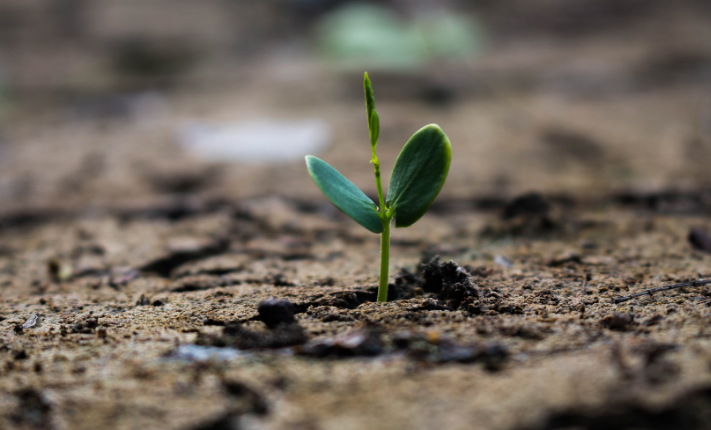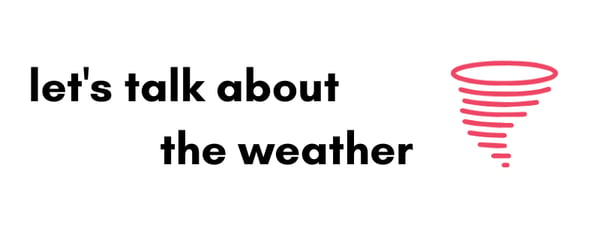Posted by Weatherflow ● March, 2021
Tempest News | March 2021

The NOAA Spring Outlook is here, and it's dry
Earlier this month, the National Oceanic and Atmospheric Administration released its official spring outlook with reports of expanding drought for much of the country and a warmer than usual spring. Currently, the United States is considered to be in a moderate drought in over 44% of the country, with almost 18% in extreme drought. Read More >>>
Greek Alphabet Retired From Tropical Storm Naming List
The World Meteorological Organization has announced that it will no longer use the Greek alphabet for naming tropical storms in the future, due to potential confusions or distractions surrounding the names. 2020 was the second season in 15 years that the Greek alphabet was used for Hurricanes Eta and Iota. Moving forward a list of supplemental names will be used in the event that the initial list of names is exhausted. Read More >>>
Six Month (or More) summers predicted in THE northern hemisphere by 2100
A group of researchers used climate modeling to study the shifting seasons of the Northern Hemisphere. Their findings? A summer season that lasts nearly half the year. Studies show that if our trends from the last 50 years continue without change, by 2100 winter will last two months of the year with significant drops in the spring and autumn seasons. Read more >>>
WORLD METEOROLOGICAL DAY
Celebrated each year on March 23rd, World Meteorological Day commemorates the establishment of the World Meteorological Organization on the same day in 1950. To celebrate, we took a deep dive into the WMO and give you the run down on what they do, where they’re headed, and this year's official theme. Read more >>>

...with horticulture teacher and manager of the outdoor gardens at the New York Botanical Garden, Adam Choper.
We caught up with Adam on one of the first warm days in early March to chat about the weather, and where to begin as we plan our gardens this season.
Q: HOW IS THE NYBG TODAY? WHAT'S BLOOMING?
A: We've had a couple of days here now that were in the 50s and 60s. Already, bulbs are starting to bloom—the snowdrops have been up for a while now (they grow through the snow). Also, the witch hazel has been in bloom for a little while. When it's really warm like today, the witch hazel is ridiculously fragrant! We have hellebores, crocus, and iris reticulata starting to open in our rock garden. We also have buds on the magnolias.
Q: HOW DOES THIS SPRING COMPARE TO THE LAST YEAR?
A: This spring is later than the last couple of years, which is actually more normal for us. Last year didn't have a proper winter, and this year, we are just getting out from under the snow cover.
Q: WHAT ARE YOU NOTICING IN THE GARDENS AS A RESULT OF OUR CHANGING WEATHER?
A: We are always planting things on the edge of what can survive. We anticipate that temperatures are warming, and there are more extreme weather events. And we have been experimenting with plants that normally are not in our USDA hardiness zones. We are testing weather, anticipating future change, and trying to be prepared for it.
Q: CAN YOU GIVE ME AN EXAMPLE OF SOME EXPERIMENTAL PLANTINGS?
A: Sure. We are planting live oaks, which are popular in the south. Typically you'll see live oaks in Savannah, draped in Spanish moss. We have some seedlings started in anticipation of the weather warming up in NY State. We project that we will be able to grow things that historically we haven't been able to, and we'll grow plants that have only until recently thrived much further south.
Q: WHAT ARE THE IMPLICATIONS OF THAT?
A: I'm predicting we will have a longer growing season, more intense storms, and we see a lot more of that already. We had a tropical storm Isaiah this summer that resulted in tremendous tree damage from the fierce winds. Most of our winds come from the west, but this came from the east. It's more exposed and a direction we don't typically get big wind from.
But on the positive side, we will be able to grow things we don't typically grow here. We might have palm trees in NY! It's a scary thought but not out of the question. But that's very long-term, maybe more than ten years away.
Q: GIVEN THE UNPREDICTABLE WEATHER, HOW CAN YOU GUARANTEE THAT PLANTS ARE BLOOMING ON SCHEDULE WHEN VISITORS COME TO THE GARDENS?
A: We are a garden, but this is show business! Here, there are a lot of stakeholders and expectations for exhibitions. We put on a show every year with the biggest and best ornamental displays. It can't go wrong! And if it does, we have to improvise. When we order plants, we order extra. We have backup plans and then backup plans for backup plans. I'm very good at spinning plates!
Q: WELL, THEN WE ALL NEED YOUR GARDENING HACKS!
A: The best hack is to follow the USDA hardiness zone guides for spring planting and know the plants you're planting and what they can tolerate (which you can google). Even better, watch the 10-day forecast before you plant and look at historical weather data for what happens in your area.
Yesterday morning, for example, I was about to plant hundreds of violas. I checked the weather, and it said Sunday night would get to 25 degrees. So we paused. Now, if we had planted, we can cover the plants. We use REMAY, but you can use burlap, and it works like a blanket to keep the plants warm. But you don't want to keep it on during the day; you want the plants to get air.
We also do things like hardening off our plants before going from the cozy warm greenhouse to colder weather. We acclimate them, so when it's a warm day, we'll gradually put them out for the day and bring them back in at night. We will slowly build them up until they are strong enough to be outside full time.
Q: DO YOU HAVE A WEATHER STATION ON-SITE?
A: Absolutely. I cross-reference our station's weather with three different weather apps when I need more specifics.
Q: SO WOULD YOU SAY THE WEATHER IS ALMOST THE MOST CRITICAL FACTOR IN MANAGING YOUR GARDEN?
A: The most important thing I teach is: Know the weather and know the plants. If you're going to take a gamble, make sure it's an educated gamble. If you're a homeowner and want to plant a flowerbed that will cost thousands to fill out, don't!! Start with buying one or two instead of going all in. It's all about experimenting. Know your microclimates. Know that your south-facing slope is going to be different than other spots on your property. Hedge your bets.
Q: WHAT ARE YOU PLANTING /PREPARING FOR NOW?
A: The showbiz never stops! We have to get everything ready for the summer exhibition- Japanese artist Yayoi Kusama. That opens on April 9th. We will have a lot of sculptures in the garden and I have to make it look fantastic for opening day. We will have bulbs, and there will be a sculpture going in the middle of a lawn. Every day from the opening to fall, there will be something beautiful in that space.
Q: CAN YOU LEAVE US WITH YOUR GO-TO RESOURCES FOR THE HOME GARDENER? BOOKS OR GADGETS THAT YOU LIKE TO USE?
A: The best thing to do is go to the botanic gardens near where you live. Go regularly and take pictures of what you love. Replicate it at home! Never stop experimenting - and it doesn't have to be expensive.
And if you are a homeowner, know your site, do a basic soil test, know what nutrients are in the soil. Know what your PH is. If you have silt clay, that will change what you can grow. There's a plant for every condition for soil.
I also recommend a rain gauge to everyone. I love those things. There are some very good inexpensive kinds; stick it outside when it rains, and it will tell you how much rain you got. You will know if you have to water. Sometimes, the surface of silt will look dry, but there's plenty of water for roots. The best gardeners are the ones who water generously but infrequently. As a general rule, you don't need to water every day. If you do, it keeps roots at the surface and makes them vulnerable when it gets hot and dry. It's better to water longer and less frequently, which helps the roots go deeper, and the plants will be more stable in drought situations in the middle of the summer.
And new plants need more water than established plants because of root development. You can learn more at any of the virtual classes at the NYBG website. We do it all, and the adult education catalog is amazing! Take a class!
Back to: Newsletter
